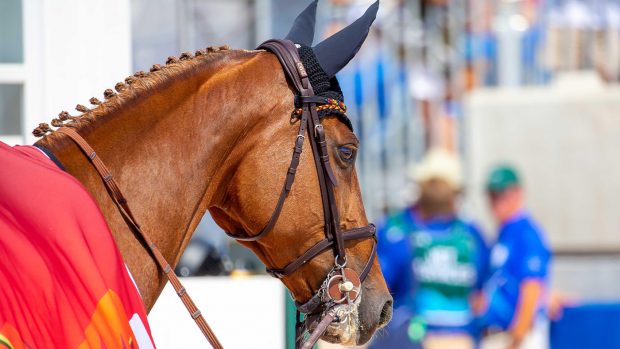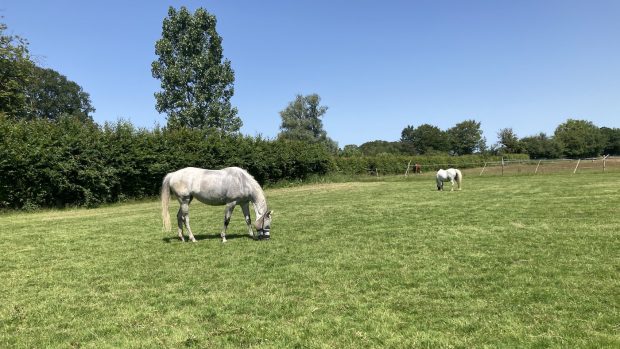How fast the horse’s heart beats depends on how hard his muscles are working. At low heart rates (less than 140 beats per minute (bpm)) the heart is able to supply the muscles with all the oxygen they need. The muscles are, in turn, able to burn fuel efficiently. Called aerobic exercise, this can be carried out for long periods without fatigue.
In endurance rides, the goal is to keep the horse exercising at this level throughout, allowing the miles to be covered efficiently. Keeping the heart rate within this aerobic zone ensures a rapid heart rate recovery when the exercise stops.
This means that the horse exercises happily for longer and passes through the veterinary checks rapidly. A canny competitor will use a heart rate monitor to keep his horse in the aerobic zone during the ride and make sure he is quickest out of the vetgate.
Measuring the heart rate
At higher heart rates (up to 240 bpm) the heart can no longer supply the muscles with all the oxygen they need.Fuel burning in the muscles is less efficient and a substance called lactate builds up in the blood.
The heart rate at which lactate begins to accumulate is known as the lactate threshold. Once this is attained, any increase in speed or effort results in more lactate entering the blood, so the exercise becomes anaerobic.
High heart rates and the build up of lactate rapidly cause fatigue, so anaerobic exercise cannot be continued for long periods. Galloping, sprinting and hill work all increase heart rate and cause lactate production.
Heart rate recovery following anaerobic exercise is slower. The body is in oxygen debt and the lactate must be disposed of, which takes time. This means a long wait before an endurance horse is released from a vetgate.
During anaerobic exercise, the muscles use more fuel and generate more heat. This is not a problem during a 3min flat race, but in a 100-mile endurance ride, a horse who spends long periods above his lactate threshold will deplete his energy reserves and dehydrate long before he finishes his event.
Because of variations in the ability of muscles to use oxygen and in the heart’s ability to supply oxygen, each horse’s heart rate response to exercise is different. Each horse also has adifferent lactate threshold.
How do monitors work?
Heart rate monitors detect the electrical signals that tell the heart to beat, each signal triggering a physical contraction of the heart.
To pick up this pulse, two conducting electrodes must be placed on the horse’s chest above and below the heart. When the horse exercises, the sweat produced is sufficient to maintain electrical contact between the electrodes and the skin.
The horse wears the electrodes and a small transmitter attached to the saddle and girth; the sensors must be pressed against the skin. Each time the heart beats, the transmitter sends a radio pulse to a watch receiver worn by the rider. The receiver counts the pulses, calculates the heart rate and displays it.



